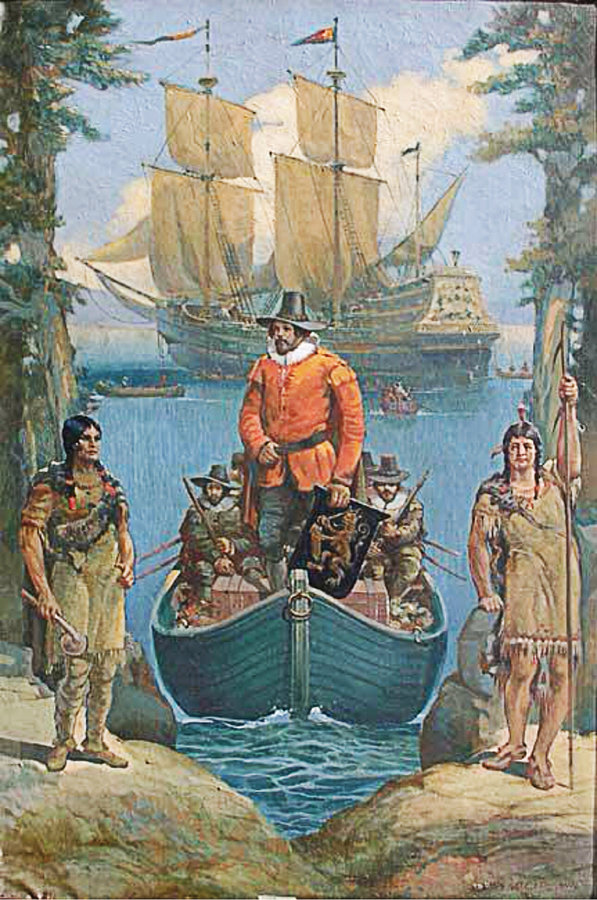Our little patch of the New World, which hugs the Hudson River, between the George Washington and Verrazano Bridges, is a gorgeous mosaic of early Native American, Dutch, and English history.
The narrative is compelling, the nomenclature often confusing. Bergen, Secaucus, and Weehawken are Dutch; Guttenberg, German; and Jersey City, Union City, and West New York, presumably English. Bayonne is not French as many believe, but reportedly a made-up name from the English word “bay.”
And Hoboken? Is it Dutch or Native American?
Our friends at the Hoboken Historical Museum to the rescue. In 1896, Charles Winfield wrote what the museum calls “a pretty exhaustive history of Hoboken,” providing a “long explanation of the origins of the name.”
Information extracted from Winfield’s book was published in a local newspaper in 1896. The first mention of the name of the area that is now Hoboken was around 1630 when the Director and Council of New Netherland referred to this land bought from Native Americans as “Hobocan Hackingh.”
“Hobocan” is the Dutch mispronunciation of the Indian word Hopoghan, which means “tobacco pipe,” in this case pipes made from soapstone at Castle Point. Hackingh is the Indian word for “land” or “the place of.”
The Old Country
But there’s another theory. E.B. O’Callaghan in his History of New Netherland, writes, “Hoboken is so called after a village of the same name, situated on the Scheldt [River], a few miles south of Antwerp.”
Winfield begs to differ. He questions why the place would be named after “such an insignificant village,” which furthermore was not the residence or birthplace of any of the men involved in purchasing the land, where Hoboken now stands. He also points out that the topography of the two places is entirely different. He describes the area near Antwerp as a “level, sandy plain,” while the New World site was “hilly and rolling … a glacial drift deposited on the outcropping rock … and in some places nearly one hundred feet above high water.” All this is to say that nostalgic Dutch settlers, in viewing Hobocan Hackingh, would not be reminded of a village in what was then the Netherlands.
Winfield reasonably asks, if the intention was to name the new site after the village of Hoboken near Antwerp, why didn’t they do so? Instead, in the deed to the land, they stuck with the Indian name, Hobocan Hackingh.
Let’s Hear It for Hoboken
OK, that said, why is the current name Hoboken? Here’s an email from the museum:
“Between the mid-1600s to the mid-1700s, prior to the American Revolution, the land had passed from Nicholas Varlett through familial descent to William Bayard, an Englishman. By the time of the Revolutionary War, maps and some newspaper reports referred to it as ‘William Bayard’s farm at Hoebuck,’ which was shortened to ‘Hobuck.’ There are even references to the ‘Hoebuck Ferry’ in the late 1700s. Bayard, a loyalist to the Crown, was forced to forfeit the land during the Revolutionary War. Col. John Stevens bought the land after the war, in 1784, and officially named it Hoboken. As of 1804 it appeared as Hoboken on a map by Charles Loss, and in the 1830s, Stevens founded the Hoboken Land & Improvement Company to develop and sell parcels of land surrounding his estate on Castle Point.”
Modern-day Hoboken has a couple of tobacco-related entities. Hoboken Cigars did not answer the phone. Bob at Hoboken Premium Cigars disclosed to 07030: “Hoboken is known for a lot of things; we only do cigars.” The Hoboken Smoke Shop did not return numerous phone calls.
Hmmm. Wonder what’s in those pipes.—Kate Rounds
